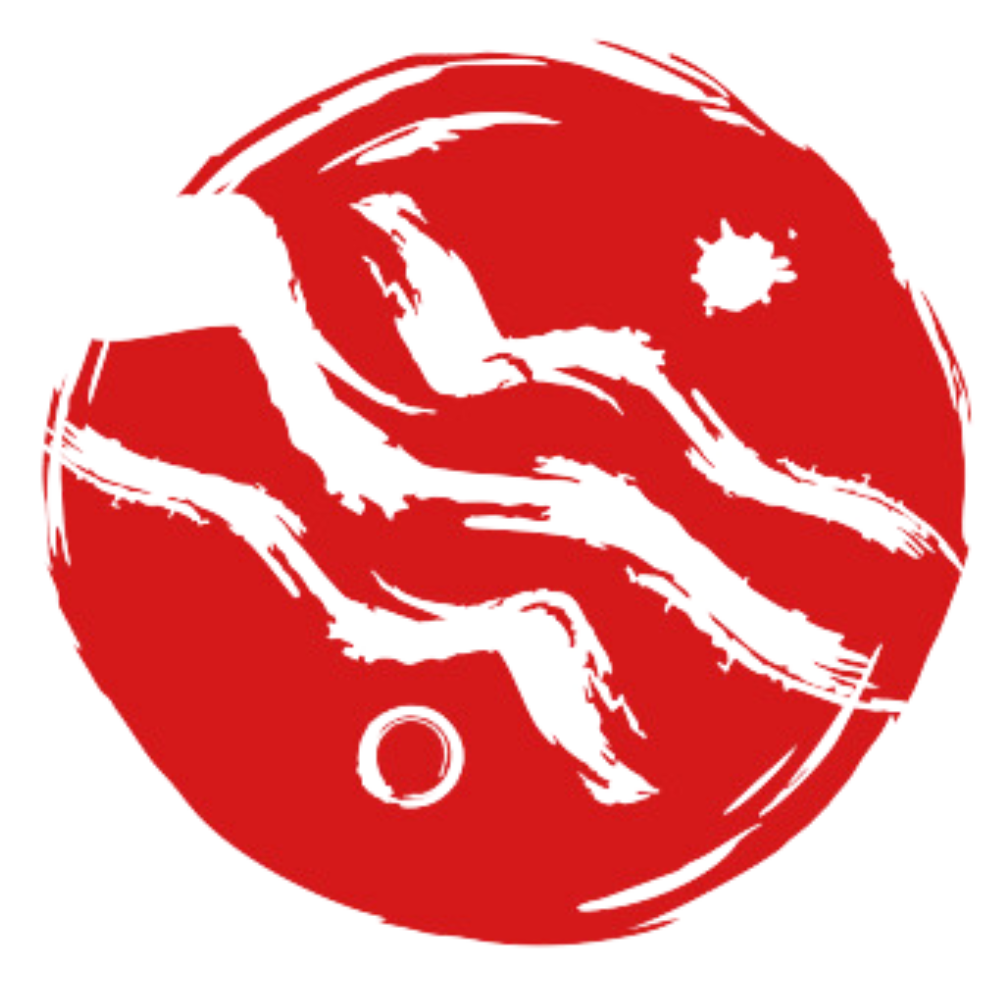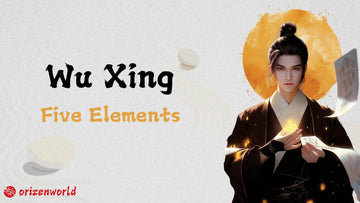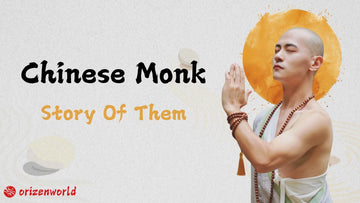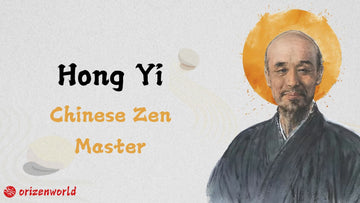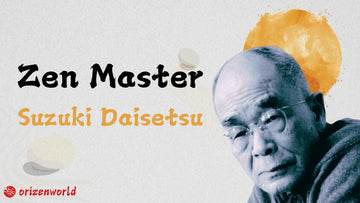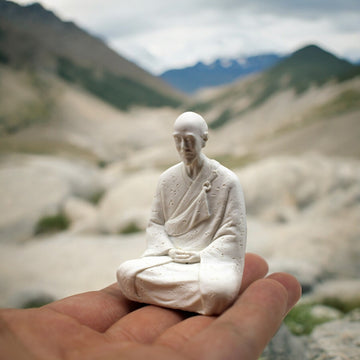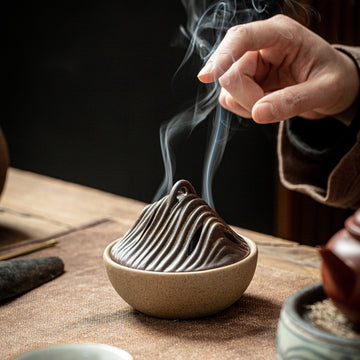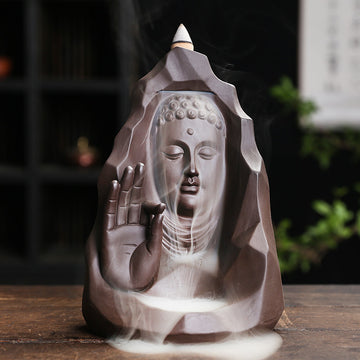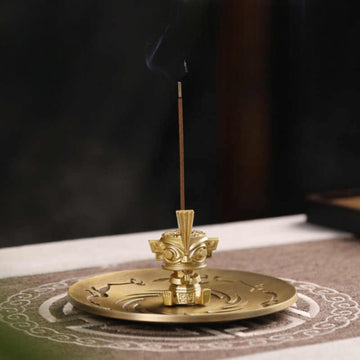If you're interested in Oriental cultures like Chinese or Japanese traditions, you may have come across the concept of the "Five Elements" or Wu Xing (五行), which include Wood, Fire, Earth, Metal, and Water. This concept is closely tied to Feng Shui and Chinese astrology, and it holds significant cultural influence throughout East Asia. For example, in the anime Naruto, ninjutsu techniques are often based on the Five Elements, with characters like the Uchiha clan using Fire Style techniques.
But why is the Wu Xing so popular, and how did it develop? In this article, we'll explore its cultural significance and evolution.
The Five Elements, or Wu Xing (五行), consist of Wood, Fire, Earth, Metal, and Water. These five fundamental elements were central to ancient Chinese philosophy, representing not just physical substances but also different functions and attributes.

Each element has unique characteristics that interact with and balance one another to form the foundation of the universe. The Wu Xing theory is rooted in the belief that everything in the cosmos is interconnected and that these elements influence both the physical world and the metaphysical realm.
Wood is associated with growth, expansion, and vitality. Symbolizing life and movement, Wood is seen as a force that stretches outward, much like the branches of a tree. It represents creativity, development, and adaptability.
Fire, on the other hand, represents heat, passion, and energy. It is associated with transformation, illumination, and activity, signifying the drive for action and change.
Earth represents stability, nourishment, and integration. It is the grounding force, symbolizing harmony and the nurturing qualities needed for growth and balance.
Metal stands for contraction, strength, and precision. It symbolizes order, structure, and clarity, often associated with discipline and the ability to focus energy.
Water represents fluidity, depth, and adaptability. Water flows and nourishes all things, symbolizing wisdom, emotional depth, and the ability to thrive in changing conditions.
These five elements are not static; they interact with one another in cycles of creation and destruction, creating a dynamic balance that is vital to the functioning of both the natural world and human life. The Wu Xing is a central concept in Chinese culture, influencing fields such as medicine, astrology, and Feng Shui.
The origins of Wu Xing (五行) can be traced back to ancient China, where it was used as a framework to explain the natural world and the dynamic balance of the universe. This philosophical system is deeply rooted in Taoist beliefs, emphasizing the interrelationship of all things in the cosmos. While there is no specific founder of Wu Xing, scholars suggest that the concept evolved organically over time, with early mentions of the Five Elements found in ancient texts predating the Spring and Autumn Period.
One theory behind the origins of Wu Xing is that it arose from early human observations and practices related to nature. In the early stages of society, humans were closely connected to the natural world through activities like hunting, fishing, and farming. These daily activities involved direct interactions with the Five Elements: Metal (mineral resources), Wood (trees), Water (water sources), Fire (for warmth and cooking), and Earth (agriculture). These elements were not only essential to survival but also to understanding the cycles of life and the forces governing the natural world.
Another perspective links Wu Xing to Traditional Chinese Medicine, particularly the ancient medical text Huangdi Neijing (黄帝内经), or the Yellow Emperor's Inner Canon. This text, which dates back to the Han Dynasty, is one of the earliest medical works to integrate the Five Elements with the human body, associating each element with a specific organ (Wood with the liver, Fire with the heart, Earth with the spleen, Metal with the lungs, and Water with the kidneys). The text provides a detailed explanation of how these elements influence human health and the balance of energies within the body.
Wu Xing's concept was not confined to medicine alone. It became foundational in various other fields such as astrology, feng shui, and even martial arts, where the elements were believed to influence personal and environmental harmony. In these contexts, Wu Xing was used to understand the interaction of energies and to promote balance, health, and success.
The deep connection between Wu Xing and Taoist thought underscores its significance in Chinese culture. As an evolving system, it integrates both practical knowledge and metaphysical concepts, making it an essential tool for understanding the workings of nature, the human body, and the universe.

In Wu Xing, the Five Elements (Wood, Fire, Earth, Metal, and Water) interact in two key ways: the productive cycle (相生) and the destructive cycle (相克). These interactions reflect the natural balance of the universe, where each element supports or controls another. The productive cycle promotes growth and harmony, while the destructive cycle regulates and controls potential excesses, maintaining equilibrium in the natural world.
The productive cycle (生成 cycle) describes how each element supports and nurtures the next. For example, Wood feeds Fire (as wood fuels fire), Fire creates Earth (through ash), Earth produces Metal (from ore), Metal carries Water (through condensation), and Water nourishes Wood (through rainfall). These relationships represent a continuous flow of energy that ensures balance and sustains life. In this cycle, the element that produces is called the "mother," and the one receiving the benefit is the "child."
The destructive cycle (克制 cycle), on the other hand, illustrates how one element controls or limits the growth of another. For instance, Wood controls Earth (by rooting and breaking the soil), Earth controls Water (by absorbing moisture), Water controls Fire (by extinguishing it), Fire controls Metal (by melting it), and Metal controls Wood (by cutting it). This cycle ensures that no element becomes too dominant, preventing imbalance and chaos.
These cycles of interaction have significant implications in feng shui, the ancient Chinese art of spatial arrangement. For example, in office layouts, placing Metal elements (such as metal decorations) in the East or Southeast—areas associated with Wood—creates a productive relationship, where Metal strengthens Wood. This arrangement is believed to enhance career prospects and interpersonal relationships. Similarly, knowing how to balance the cycles of growth and control can improve the overall energy flow and harmony in a space.
In summary, the interactions between the Five Elements are essential for creating balance and harmony in both nature and human environments. By understanding these cycles and applying them in practical settings like feng shui, individuals can optimize their surroundings to foster prosperity, health, and well-being.
Wu Xing (the Five Elements) plays a significant role in the daily lives of Chinese people, influencing various aspects from astrology to naming and Feng Shui.
One of the most important applications of Wu Xing is in the calculation of Ba Zi (生辰八字), also known as the Eight Characters of Destiny. This system analyzes the year, month, day, and time of a person's birth, corresponding to the Five Elements. By understanding the interactions of the elements in a person's Ba Zi chart, Chinese astrologers can provide insights into one’s luck, career, and health.
Another common use of the Wu Xing is in naming. In Chinese culture, names are carefully chosen based on a person’s Ba Zi to ensure balance among the elements. For example, if a person's chart lacks the Metal element, a name with a Metal radical or character might be selected. This practice is believed to bring harmony and improve one's fortune, as names are thought to have a profound impact on destiny.
Additionally, Wu Xing is a key component in Feng Shui calculations. By evaluating the elements in a given space, Feng Shui experts can recommend changes to enhance prosperity, health, and overall well-being, aligning the elements in the environment to complement the individual’s natural flow.
In Feng Shui, the Five Elements—Wood, Fire, Earth, Metal, and Water—are often used to remedy common problems such as stagnant Chi or imbalance in a space. Balancing these elements through thoughtful placement of objects can improve the energy flow and promote harmony.
Crystals are commonly used in Feng Shui as a remedy for negative energy. Clear quartz, for example, is associated with the Water element and is used to clear blocked Chi. Similarly, plants, representing Wood, are often placed in areas where growth and vitality are needed. A thriving plant in the East or Southeast can help attract wealth and health, as it strengthens the Wood element.
For specific issues, elemental cures can target the root cause. For instance, if a mirror faces the bedroom door, it can disrupt sleep and cause restlessness. In this case, introducing Metal elements, such as a copper wind chime or decorative items, can help deflect the energy. The Metal element draws the focus away from the mirror and promotes peaceful sleep and sweet dreams.
In conclusion, using the Five Elements in Feng Shui remedies allows individuals to harmonize their spaces, overcome common energy imbalances, and improve overall well-being.
To use Wu Xing (the Five Elements) to improve your environment, it's important to incorporate specific elements that align with your goals, whether they are for wealth, health, or relationships. Each element has its unique qualities and can be activated through Feng Shui practices.
For Wood, which supports growth and vitality, use green plants or wooden furniture in the East or Southeast of your home or office. This area can encourage prosperity and personal growth. Incorporate elements like bamboo, green textiles, or even a pet cat or rabbit to boost this energy.
To activate Fire for energy and passion, use red, pink, or orange hues in the South of your space. Bright lighting, candles, or even placing a fire-related object such as a decorative lamp can help. Consider displaying vibrant artwork or engaging in activities like public speaking or cooking to further energize this element.
For Earth, which enhances stability and health, focus on colors like yellow or brown and place objects made from clay or ceramics in the center or Southwest. Consider engaging in activities like hiking or cooking with root vegetables to bring the Earth energy into your routine.
Lastly, to activate Metal for clarity and focus, use white or metallic colors in the West or Northwest areas. Metallic accessories, such as silver jewelry or a metal sculpture, can help balance the energies. Engaging in practices that foster discipline, like learning a musical instrument, can strengthen this element.
Can Wu Xing be used to improve my luck?
Yes, Wu Xing is often used in Chinese culture to improve personal luck. By aligning the elements of one's Ba Zi, choosing the right names, or adjusting the elements in the home or office (through Feng Shui), individuals can harmonize their environment and improve their life energy (Chi).
How does Wu Xing affect my name?
Wu Xing is commonly used in Chinese naming to ensure harmony with a person’s Ba Zi. For instance, if an individual’s birth chart lacks an element, a name containing characters that represent that missing element may be chosen to bring balance and support their fortune.
Is Wu Xing connected to Chinese philosophy?
Yes, Wu Xing is deeply embedded in Taoist philosophy, which views the universe as an interconnected web of dynamic forces. Wu Xing helps explain how natural phenomena, life events, and the human body are all influenced by the balance and interaction of these five elements.
Can Wu Xing be applied to modern life?
Absolutely! Many modern Chinese people still use Wu Xing for Feng Shui, astrology, and name selection. It remains a vital part of cultural practices aimed at maintaining balance, health, prosperity, and success in both personal and professional life.
What is the significance of Wu Xing in Chinese culture?
Wu Xing is not just a philosophical concept; it is a deeply ingrained part of Chinese culture. From art to health practices, daily life to traditional customs, the theory of the Five Elements shapes how Chinese people understand their relationship with the universe and nature.
